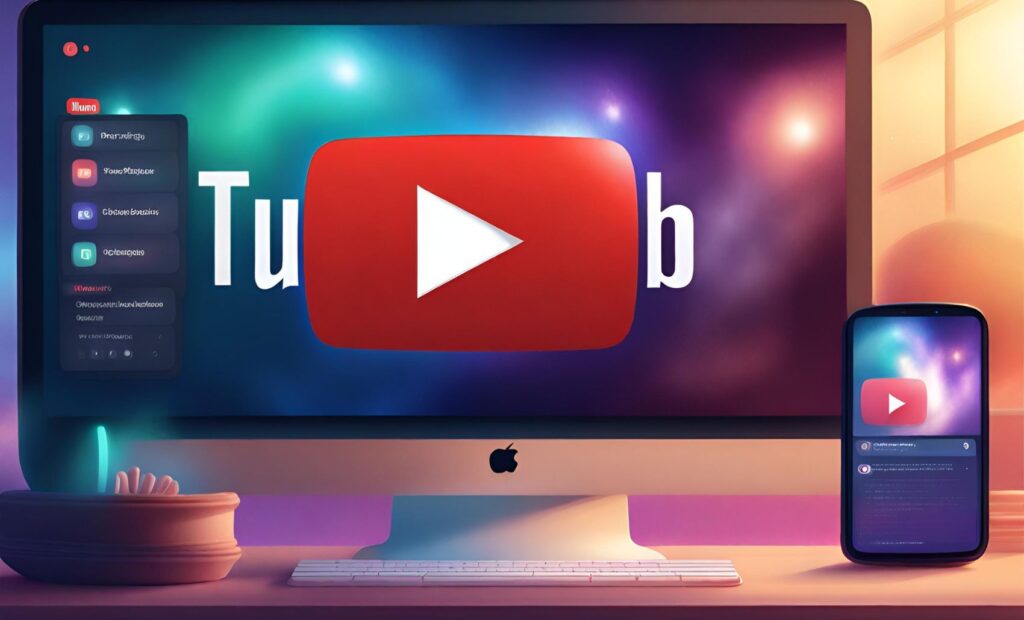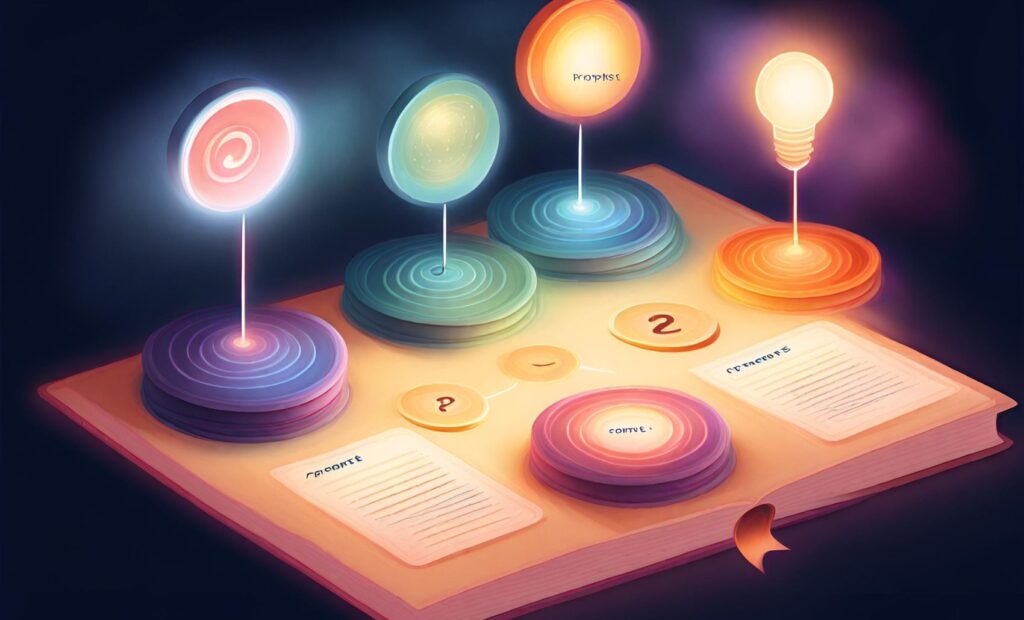In the world of YouTube, creating effective titles for your videos is crucial for attracting viewers and increasing engagement. If you’re looking to enhance your skills in this area, then you’re in luck. In this article, we’ll be exploring “Creating Effective Titles for YouTube Videos: A Guide to Prompt Engineering in the ChatGPT Course.” This comprehensive guide, presented by H-EDUCATE, will teach you everything you need to know about prompt engineering in the ChatGPT course. From basic terminologies like AI, NLP, GPT, and LLM to advanced techniques and examples, this guide will equip you with the necessary skills to create captivating titles that will boost your YouTube presence. So, let’s dive into the world of prompt engineering and take your video titles to the next level!
Prompt engineering has been gaining popularity, and learning this skill can open up new opportunities for you. If you’re eager to delve into the world of YouTube and become a successful YouTuber, this free course is a must-watch. Designed to help millions of individuals learn the art of prompt engineering, this course offers in-depth explanations of essential terminologies like NLP, GPT, AI, and LLM. You’ll also get to practice prompt engineering with real-life examples and explore advanced techniques for maximizing the potential of artificial intelligence. Additionally, the course covers important factors such as model understanding, tokenization, temperature, and top-p. By mastering these skills, you’ll become a professional prompt engineer and unlock endless possibilities in the world of YouTube. So, if you’re ready to enhance your YouTube titles and boost your channel’s growth, let’s get started on this exciting journey of prompt engineering!

Basic Terminologies befor writing YouTube Video Titles
AI
AI stands for Artificial Intelligence. It is a field of study that aims to teach computers to think, learn, and understand like humans. By doing so, computers become capable of writing, creating content, solving complex problems, drawing, or even programming, using simple words. The goal is to make computers do what humans do now.
NLP
NLP stands for Natural Language Processing. It is a subset of AI where we train and enable computers to understand human language. So, when we ask them a question, they understand it and provide an answer. This is where prompt engineering comes into play.
GPT
GPT is an abbreviation for “Generative Pre-trained Transformer.” It is a pre-trained NLP AI model. So, when we train a computer to understand human language, we are working in the field of NLP AI. When the computer is capable of doing that, we refer to it as an AI model. Therefore, GPT is the name of an NLP AI model. There are multiple versions of GPT, such as GPT-2 and GPT-3.
LLM
LLM stands for “Large Language Model.” It is a term that refers to large models of NLP AI, such as GPT-3. These models have billions of parameters, which allow them to generate detailed and coherent responses.
Practice Prompting for YouTube Video Titles
Types of prompts
There are two main types of prompts: example-based prompts and direct prompts.
Example-based prompts involve giving ChatGPT a specific role or identity. This allows us to guide its thinking in that specific direction. For example, we can tell ChatGPT, “You are an expert in writing YouTube video titles.” By providing this role or identity, we help guide the AI model’s focus.
Direct prompts, on the other hand, involve giving specific instructions or details. For example, a direct prompt could be, “Write five YouTube video titles about online marketing.” With this type of prompt, we provide specific guidance and ask ChatGPT to generate relevant ideas or content.
Advanced Prompts
Advanced prompting techniques allow us to get better results from the AI model. Here are a few techniques you can use:
1. Define the context and purpose: Clearly define what you want the AI model to do and why. For example, if you want the AI model to generate YouTube video titles, mention that you want attention-grabbing titles that encourage people to click and watch the videos.
2. Step-by-step instructions: Provide instructions in a sequential manner, asking the AI model to think step by step. For example, you can ask the model to brainstorm ideas, then narrow down the options to create a shortlist.
3. Zero-shot learning: Use zero-shot learning to teach the model how to generate content for a specific target audience or purpose. You can explain the target audience’s characteristics, interests, and preferences, enabling the model to tailor its responses accordingly.
4. Feedback loop: Engage in an iterative process with the model. After receiving the initial response, ask follow-up questions or provide feedback to help the model refine its output. This feedback loop allows you to fine-tune the AI’s responses to align better with your requirements.
These advanced prompting techniques can significantly improve the accuracy and relevance of the AI model’s responses.
Example 1
Let’s dive into our first practical example using ChatGPT.
Imagine you are struggling to come up with five YouTube video titles about online marketing. You can use prompt engineering techniques to get ChatGPT’s help.
To prompt ChatGPT, start a new chat conversation and mention:
“You are an expert in writing YouTube video titles. Please think of attention-grabbing titles that would encourage people to click and watch the videos.”
By setting the context and purpose, you guide ChatGPT’s responses. Additionally, asking it to create attention-grabbing titles directs its thinking towards generating compelling options.
Now, let’s see how ChatGPT responds. Hit “Send,” and wait for its suggestions. Once you receive the response, evaluate the generated titles and consider their relevance and effectiveness for your YouTube videos.
Remember, if the output doesn’t meet your expectations, you can refine the prompt, provide feedback, or use other advanced techniques to further enhance the results.
Example 2
In this example, let’s explore a different scenario. Imagine you need help with writing an engaging introduction for an article on digital marketing.
To prompt ChatGPT effectively, you can start a new chat and provide the following information:
“You are an expert in writing engaging introductions for articles on digital marketing. Please write an introduction that captivates readers’ attention and entices them to read the full article. The article discusses the latest trends in digital marketing and provides practical tips for businesses.”
By setting the context and purpose, you guide ChatGPT’s understanding of your needs. By specifying the desired outcome, you focus its thinking on generating an engaging introduction relevant to your article.
Once ChatGPT generates a response, review and evaluate the introduction. If it meets your requirements, you can use it as is or make minor adjustments. If it falls short, you can refine the prompt, provide more explicit instructions, or engage in a feedback loop to iteratively improve the output.
Remember, the more specific and detailed your instructions are, the better the AI model can generate tailored responses.

Example 3
Now, let’s explore another example: creating conversational dialogue. Imagine you want to have a chat with an AI companion about your favorite movies.
To prompt ChatGPT effectively, start a new chat and provide ChatGPT with the following role:
“Let’s have a conversation about our favorite movies. You are a movie enthusiast and can recommend great films based on different genres and preferences.”
With this example-based prompt, you establish ChatGPT’s role, making it an AI companion with extensive movie knowledge. By doing so, you guide its thinking and ensure that its responses align with the movie-related conversation you want to have.
Now, initiate the chat by mentioning a popular movie or asking a question about movies. Once ChatGPT responds, engage in a conversation and ask follow-up questions or provide feedback to refine the conversation further.
Remember, creating a conversational dialogue requires back-and-forth interactions, iterating on the model’s responses, and providing specific feedback to ensure a meaningful conversation.
Example 4
In this example, let’s consider a scenario where you need assistance in generating creative ideas for your art project.
To prompt ChatGPT effectively, start a new chat and set the context:
“You are a creative artist with a passion for unique art projects. Please help me generate some creative ideas for my art project. It should be innovative, visually captivating, and thought-provoking.”
By defining ChatGPT as a creative artist, you guide its thinking towards generating out-of-the-box ideas. By mentioning the desired qualities of the art project, you provide criteria for evaluating the generated ideas.
Once ChatGPT generates ideas, review them and consider their novelty, visual appeal, and ability to provoke thoughts. If the ideas meet your expectations, you can further develop them. If not, provide specific feedback or refine the prompt to guide ChatGPT towards more suitable ideas.
Prompt engineering allows you to leverage AI to spark your creativity and explore new possibilities in your chosen field.

Example 5
Let’s explore another example: generating catchy headlines for a blog post on fitness and wellness.
To prompt ChatGPT effectively, begin a new chat by setting the role and providing specific instructions:
“You are a talented content writer specializing in health and wellness topics. Please come up with catchy headlines for my blog post on fitness and wellness. The headlines should capture readers’ attention, convey the main subject, and make them curious to read the full article.”
By establishing ChatGPT as a talented content writer specializing in health and wellness, you create a role that focuses its thinking. By specifying the requirements for the headlines, you guide ChatGPT towards generating attention-grabbing and informative titles.
Once ChatGPT provides its suggestions, evaluate them based on their ability to captivate readers and accurately represent the content. You can choose a headline as is or refine it to align better with your style or preferences.
Remember, utilizing prompt engineering techniques empowers you to leverage AI to enhance your content creation process effectively.
Example 6
Let’s consider one more example: generating song lyrics for a specific genre, like country music.
To prompt ChatGPT effectively, initiate a new chat and set the context:
“You are a talented songwriter known for crafting beautiful lyrics in country music. Please help me create lyrics for a country song about love, nostalgia, and the beauty of rural life.”
By establishing ChatGPT as a talented country music songwriter, you tap into its expertise in crafting lyrics for this specific genre. By providing the thematic elements of love, nostalgia, and rural life, you inspire the AI model to generate lyrics that evoke the essence of country music.
Once ChatGPT generates the lyrics, review them for their authenticity, emotional resonance, and alignment with the intended mood. You can use the generated lyrics as inspiration, refine them, or combine elements from various suggestions to create your unique song.
Prompt engineering allows you to leverage AI to boost your creativity and explore new artistic domains.

Other Factors
Apart from prompt engineering, there are several other factors to consider when working with AI models like ChatGPT. Let’s explore a few of them:
Model
The AI model you choose, such as GPT-3, plays a crucial role in determining the quality and capabilities of the responses generated. Different models have varying sizes, training data, and parameter counts, which affect their language understanding and creative abilities. It’s essential to understand the strengths and limitations of the chosen model for prompt engineering.
Token
In natural language models like GPT, text is divided into tokens, which can be as small as a character or as large as a word. The total number of tokens in a conversation or prompt affects the cost and response time, as models charge per token and have token count limits. It’s crucial to be mindful of token usage, especially when working within specific constraints.
Temperature and Top-p
Temperature and Top-p are parameters that influence the randomness of the AI model’s responses. Temperature determines the level of randomness, with higher values generating more diverse outputs. Top-p (also known as nucleus sampling) controls the diversity by selecting from the top probability-ranked tokens. Understanding these parameters allows you to fine-tune the balance between creativity and coherence in the AI model’s responses.
Considering these factors can help you optimize the prompt engineering process and achieve more desirable outputs from AI models.

Conclusion
Prompt engineering is a powerful technique that empowers you to shape the response of AI models like ChatGPT. By providing specific instructions, defining roles and identities, and leveraging examples and advanced techniques, you can guide the AI model to generate more relevant and accurate responses.
In this article, we explored the basic terminologies associated with AI, NLP, GPT, and LLM. We then delved into the practice of prompt engineering, understanding different types of prompts and exploring practical examples for various scenarios.
Remember, prompt engineering is an evolving field, and continuous practice, refinement, and experimentation will help you master this skill. So, as you embark on your journey as a prompt engineer, keep learning, exploring, and pushing the boundaries of what you can achieve with AI models. Happy prompting!




